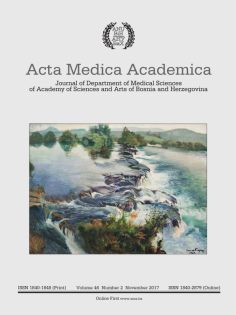Variable skeletal anatomical features of acromegaly in the skull and craniocervical junction
DOI:
https://doi.org/10.5644/ama2006-124.201Keywords:
Acromegaly, Skull base, Craniocervical junction, Paranasal sinuses, Wormian bonesAbstract
Objective. This study adds important information regarding the morphological alterations caused by growth hormone hypersecretion in the skull and craniocervical junction (CCJ). A variably asymmetric skull due to acromegaly coexists with expansion of the paranasal sinuses and multiple Wormian bones. Case report. A pathologically asymmetric dry skull of a European male, aged 38 years at death, with cranial vault and skull base thickening is described. The extensive paranasal sinus pneumatization caused a generalized thinning of the bony walls. The sphenoid sinus expanded intraorbitally, leading to sella enlargement. The orbital asymmetry coexisted with platybasia and hypoplasia of the occipital condyles and the odontoid process. Facial skeleton elongation and mandibular overgrowth were combined with prognathism, malocclusion and overbite. Conclusion. Skull and CCJ alterations are of paramount importance when selecting the surgical approach, if surgery is indicated. Consecutively, detailed preoperative evaluation and planning is essential. During surgery, skilled and experienced neurosurgeons recognize anatomical landmarks, use neuro- navigation and micro-instrumentation in order to remain on the mid- line avoiding any potential lethal vascular injury.





